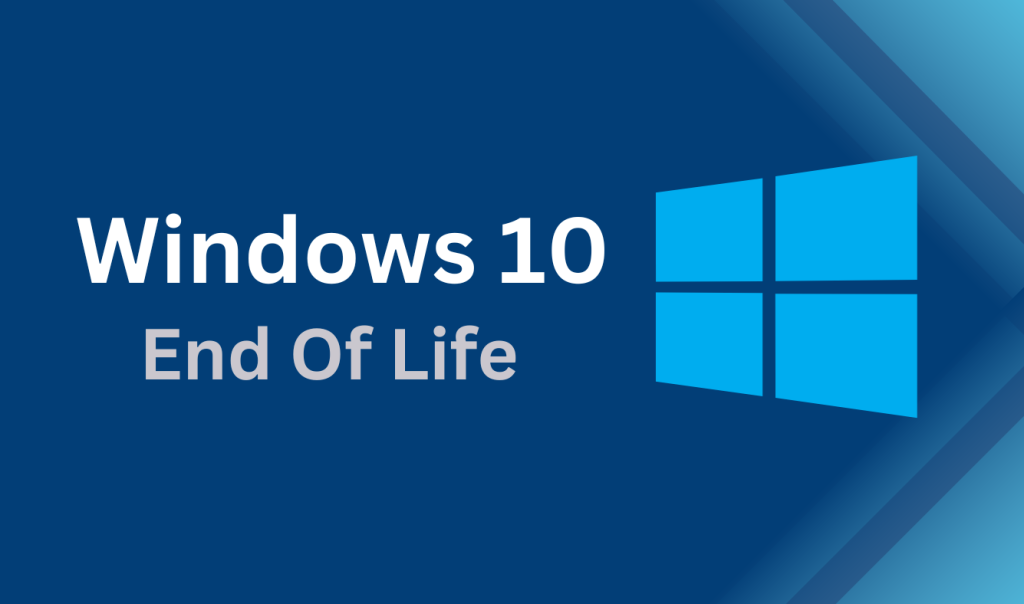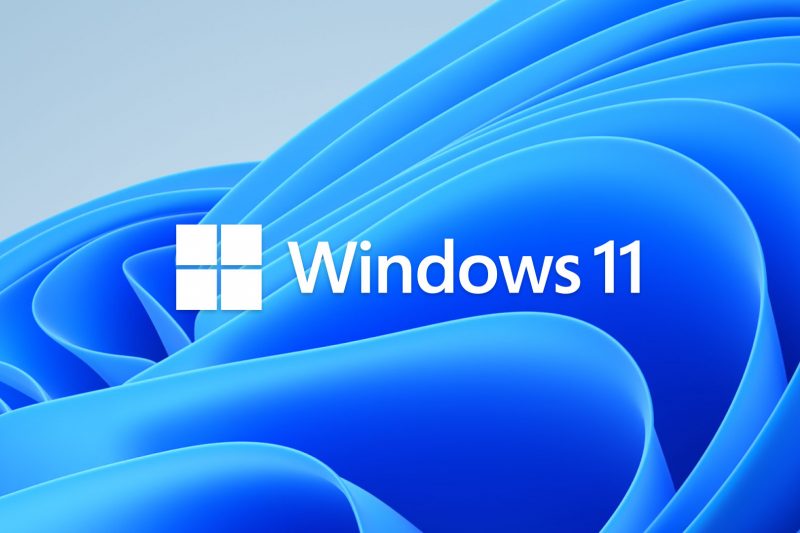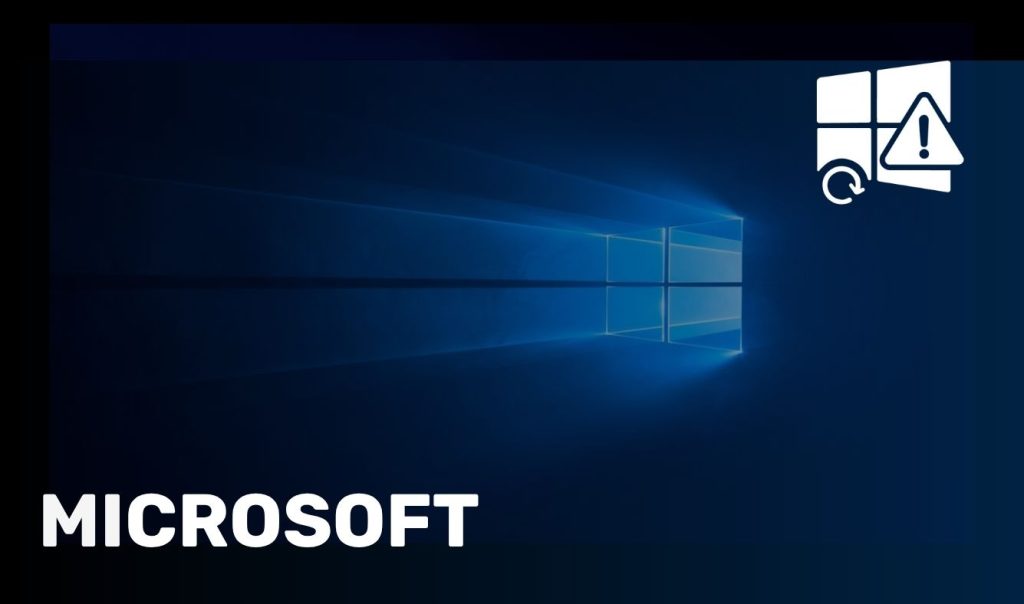Windows 10 has been a staple in the business world since 2015, and with more than one billion computers using the operating system worldwide, it’s easy to see why it is a go-to choice for businesses.
We aim to ensure that all our clients and readers are well-informed and prepared for this transition.
This article crafted by Creative Networks will dive into what Windows 10 End of Life (EOL) means, how it impacts businesses, and how to prepare for the transition.

When will Windows 10 EOL happen
The End of Life of Windows 10 signifies that Microsoft will cease to provide technical support, security updates, and bug fixes for the operating system after October 14, 2025. While users can still operate devices with Windows 10, the lack of ongoing support means increased vulnerability to security threats and compatibility issues with new software and hardware.
However, support for Windows 10 will end in a little over a year, and with that comes significant changes for users of this operating system. If you aren’t prepared, you could face challenges once Windows 11 becomes the mandatory operating system.
Why is Windows 10 EOL Happening?
The End of Life (EOL) for Windows 10 is part of Microsoft’s regular lifecycle policy for its operating systems. This policy ensures that each OS receives a decade of support, with Windows 10 reaching its ten-year mark in 2025.
By ending support, Microsoft can focus resources on newer technologies and operating systems, such as Windows 11, which offer enhanced security features, better performance, and more advanced functionalities.
What Happens after the EOL
Increased Security Risks
Post-EOL, Windows 10 devices will no longer receive security patches, making them susceptible to malware, viruses, and other cyber threats. This exposes businesses to significant risks, including data breaches, compliance violations, and operational disruptions.
The lack of security updates can make it easier for hackers to exploit vulnerabilities, leading to potential financial losses and reputational damage.
Software and Hardware Compatibility
As developers focus on newer operating systems, software and hardware designed for the latest Windows versions may not be compatible with Windows 10.
Businesses might face challenges running new applications or integrating new hardware, leading to potential productivity and efficiency losses.
Over time, the software ecosystem will move forward, leaving Windows 10 users with outdated and unsupported applications.
Financial and Operational Impact
Continuing to use an unsupported operating system could result in higher costs in the long run. Businesses may incur expenses related to cybersecurity incidents, legal penalties for non-compliance, and the need for emergency upgrades or replacements of critical systems.
The operational disruptions caused by software and hardware incompatibilities can also lead to decreased productivity and increased support costs.
Current Usage Statistics
As of now, Windows 10 remains widely used, with a substantial percentage of the global PC market still running this operating system. Many organisations have not yet transitioned to newer versions due to hardware compatibility issues or the scale of migration required.
Windows 11 is still being used only on 27% of devices, even after 3 years of its release, according to StatCounter. Currently, Windows 10 is powering over twice as many PCs compared to Windows 11.
Preparing for the End of Windows 10 Support
Conduct a Hardware and Software Inventory
Start by identifying all devices currently running Windows 10. Assess their compatibility with newer versions using tools like . This will help you determine which devices can be upgraded and which need to be replaced.
Any computer bought before 2017 may lack the necessary hardware to run newer operating systems, so this inventory is crucial for planning your migration strategy.
Develop a Migration Plan
Create a detailed migration plan that prioritizes devices based on factors such as age, performance, and user roles. Decide whether to perform in-place upgrades, fresh installations, or a hybrid approach.
Consider piloting the upgrade on a small group of devices to identify potential issues. This approach helps mitigate risks and ensures a smoother transition for your entire organisation.
Enhance Security Measures
Strengthen your cybersecurity protocols to protect against potential threats during the transition. Implement firewalls, antivirus software, and intrusion detection systems.
Ensure all critical data is backed up before initiating the upgrade process. This step is vital to safeguard your digital assets and minimise the risk of data loss during the migration.
Educate and Train Employees
Provide IT transition planning and training sessions and resources to help employees adapt to new operating systems.
Familiarise them with new features and functionalities to minimise productivity disruptions during the transition period. User education is crucial to ensure a smooth transition and maintain productivity levels during and after the upgrade.
Explore Alternatives
Use this transition period to explore new opportunities, such as migrating to cloud services like OneDrive or switching from Gmail to Office 365. T
his can enhance your business operations and streamline processes. Embracing new technologies and services can improve efficiency and provide a competitive edge in the market.
Preparing for the Transition to Windows 11
To prepare for this transition, there are several things your business should start doing now to ensure a smooth upgrade to Windows 11 by October 2025.
Conduct a Hardware and Software Inventory
- Identify all Windows 10 devices and assess their compatibility with Windows 11.
- Use Microsoft’s free PC Health Check tool to simplify the compatibility assessment.
- Upgrade existing hardware if necessary, or determine eligibility for a free Windows 11 upgrade.
Prioritise Your Upgrade Strategy
- Consider factors such as device age, performance needs, and user roles when determining the upgrade order.
- Pilot the upgrade on a small test group to identify any unforeseen compatibility issues with business-critical software.
Back Up Essential Data
- Ensure all essential data is backed up before initiating any large-scale rollouts.
- This step safeguards against data loss, protecting important documents, photos, and other files during the transition.

Environmental Impact and E-Waste Concerns
With the end of support for Windows 10, an estimated 240 million PCs could become e-waste due to incompatibility with newer operating systems. This highlights the importance of sustainable IT practices.
Consider refurbishing and donating usable devices to reduce environmental impact and support digital equity. Recycling and repurposing old hardware can mitigate the environmental impact and contribute to a more sustainable future.
Extended Security Updates
Microsoft has announced that Extended Security Updates (ESU) for Windows 10 will be available until October 2028, for a fee. While this option can extend the life of existing devices, the cost may be prohibitive for some businesses, making an upgrade to newer versions the more cost-effective solution in the long term. The ESU option provides a temporary solution but should not be relied upon for the long term.
The end of support for Windows 10 presents both challenges and opportunities. By proactively preparing for this transition, businesses can mitigate risks, enhance security, and ensure seamless operations. Embrace this chance to modernise your technology infrastructure and stay ahead in an ever-evolving digital landscape
Ready to Transition from Windows 10?
At Creative Networks, we specialise in guiding businesses through IT transitions. Our experts can help you develop a comprehensive migration plan, ensure compatibility, and provide ongoing support to make your transition smooth and efficient.
Contact us today to start planning your upgrade and secure your business’s digital future.
Get Started Now!




